Removing a Tyre
-
Loosen the wheel nuts by turning them anticlockwise one turn each, but do not remove any wheel nuts until the tyre has been raised off the ground.
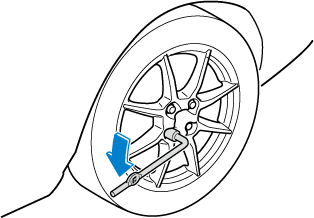
-
Place the jack on the ground.
-
Turn the jack screw in the direction shown in the figure and adjust the jack head so that it is close to the jack-up position.
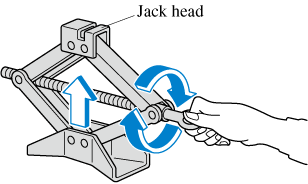
-
Place the jack under the jack-up position closest to the tyre being changed with the jack head squarely under the jack-up point.
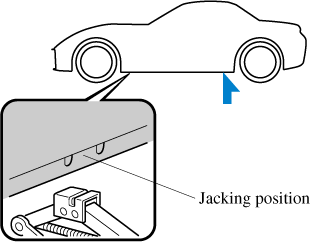
-
Continue raising the jack head gradually by rotating the screw with your hand until the jack head is inserted into the jack-up position.
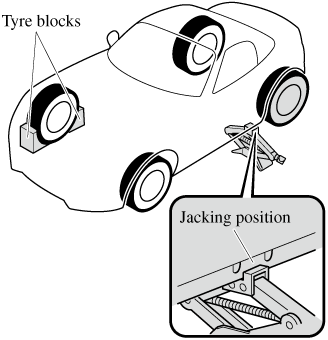
Use only the front and rear jacking positions recommended in this manual:
Attempting to jack the vehicle in positions other than those recommended in this manual is dangerous. The vehicle could slip off the jack and seriously injure or even kill someone. Use only the front and rear jacking positions recommended in this manual.
Do not jack up the vehicle in a position other than the designated jack-up position or place any objects on or under the jack:
Jacking up the vehicle in a position other than the designated jack-up position or placing objects on or under the jack is dangerous as it could deform the vehicle body or the vehicle could fall off the jack resulting in an accident.
Use only the jack provided with your Mazda:
Using a jack that is not designed for your Mazda is dangerous. The vehicle could slip off the jack and seriously injure someone.
Never place objects under the jack:
Jacking the vehicle with an object under the jack is dangerous. The jack could slip and someone could be seriously injured by the jack or the falling vehicle.
Close Warning View Warning
View Warning
-
Insert the jack lever and attach the wheel brace to tyre jack.
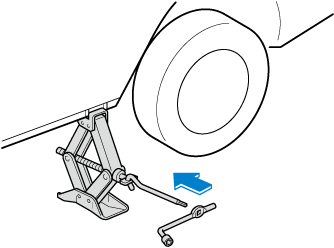
-
Turn the jack handle clockwise and raise the vehicle high enough so that the tyre is raised off the ground and can be removed. Before removing the wheel nuts, make sure your Mazda is firmly in position and that it cannot slip or move.
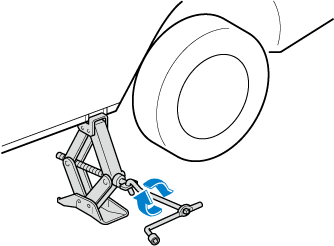
Do not jack up the vehicle higher than is necessary:
Jacking up the vehicle higher than is necessary is dangerous as it could destabilize the vehicle resulting in an accident.
Do not start the engine or shake the vehicle while it is jacked up:
Starting the engine or shaking the vehicle while it is jacked up is dangerous as it could cause the vehicle to fall off the jack resulting in an accident.
Never go under the vehicle while it is jacked up:
Going under the vehicle while it is jacked up is dangerous as it could result in death or serious injury if the vehicle were to fall off the jack.
Close Warning View Warning
View Warning
-
Remove the wheel nuts by turning them anticlockwise; then remove the wheel.


 Read this first
Read this first



















